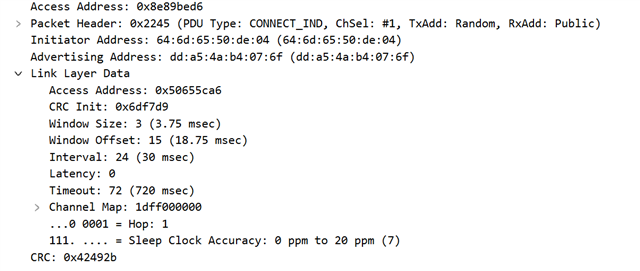Hi,
I have a two part question aimed at optimizing the battery life during BLE transmissions. I am using an nRF52805 with the S112 soft device and a DCDC regulator connected to the Nordic pp2. My connection parameters are as follows: Max con interval = 525ms, Min = 495ms with a slave latency of 10 and 18s con sup timeout.
1) After scheduling a notification of only 2 bytes with the HVX, I am getting two events on consecutive connection intervals despite only scheduling one. As I understood it, only indications would need an acknowledgement on the subsequent transmission. I am aware that notifications still have a link layer acknowledgement, but I thought that this would be in the same connection interval and not the subsequent. I have attached screenshots of my power profiler for both the entire window (from HVX called to the second transmission) as well as a zoomed in views of the first and second transmissions.
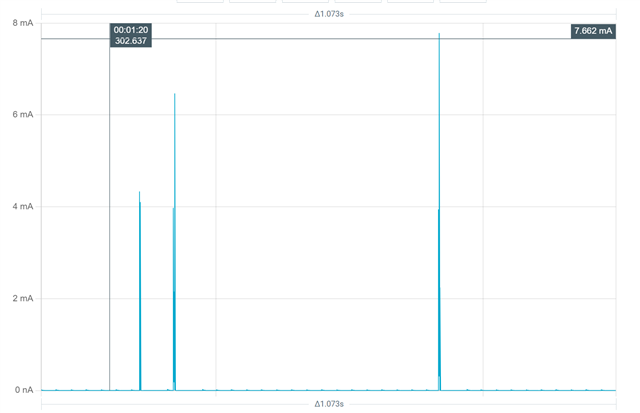
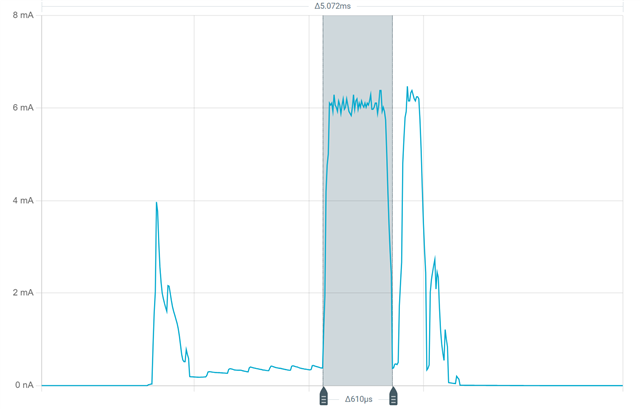

2) When connecting to the standalone BLE app on nRF connect desktop I am getting a substantial power decrease compared to that of the same negotiated parameters on an iPhone. From looking at the pp2 data, the RX window is being opened for 1.6ms (as shown selected below) compared to 600us (shown selected above) when connected to the Nordic app. My MTU size is 23 and my event length is set to 6. This is also verified with a sniffer that the iPhone is not negotiating these two parameters. Is this a common or could I be missing something in my config.
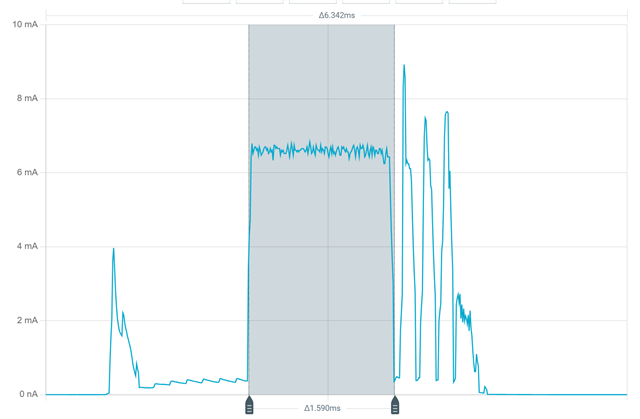
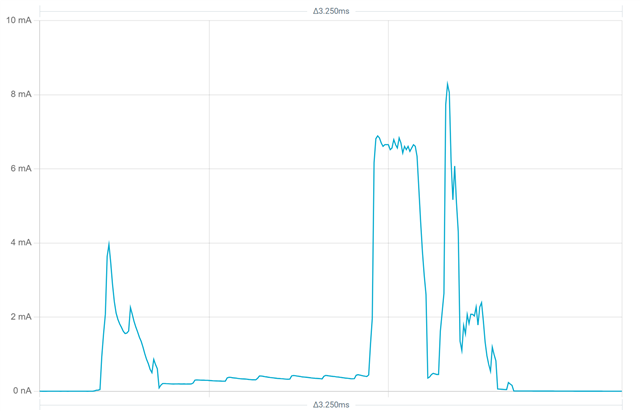
The first transmission is on the left and the second is on the right.
Thank you for your help with this!



